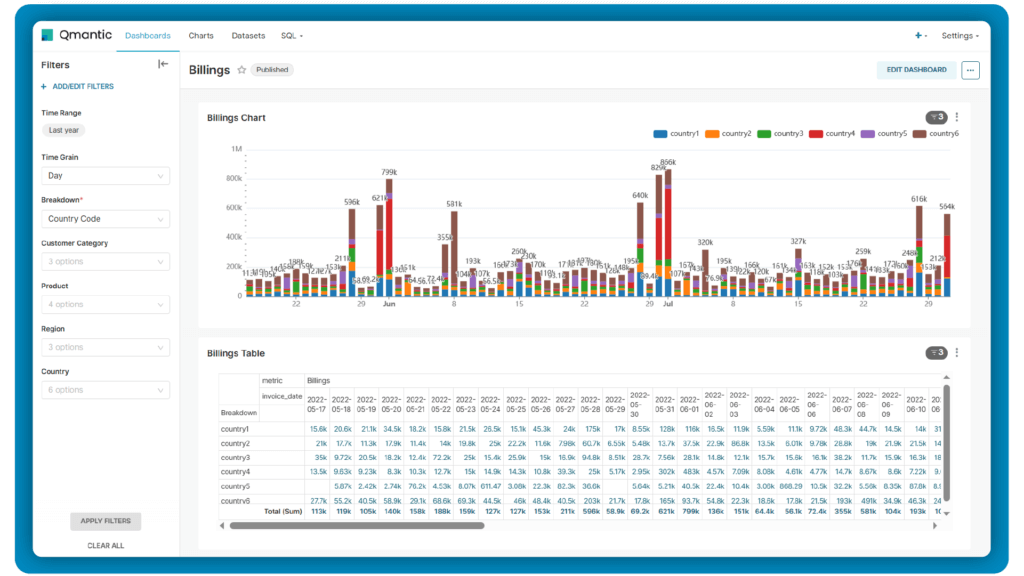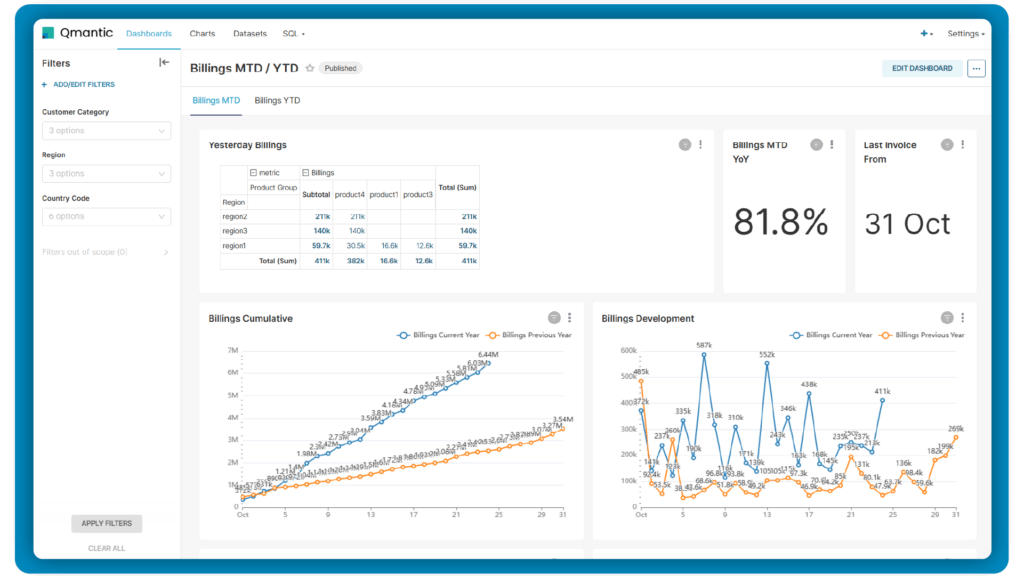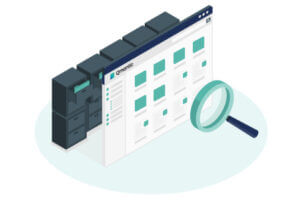In today’s data-driven world, organizations encounter complex challenges that demand a thorough understanding of the factors behind problems or successes. Root Cause Analysis (RCA) is a systematic approach to uncovering the underlying reasons for an issue or outcome. By utilizing Business Intelligence (BI) tools like slice-and-dice and drill-down functionalities, organizations can effectively conduct RCA, extract valuable insights, and make informed decisions. This article explores the concept of RCA, its execution through BI tools, and the role of Qmantic in collecting and connecting data for meaningful analysis.

Understanding Root Cause Analysis
Root Cause Analysis is a problem-solving technique that focuses on identifying the primary cause of a particular issue rather than treating its symptoms. By addressing the root cause directly, organizations can implement effective and lasting solutions, leading to improved performance and outcomes. Overall RCA involves analyzing data, investigating processes, and asking “why” questions repeatedly to uncover the fundamental cause of a problem.


Leveraging BI Tools for RCA
BI tools play a crucial role in performing RCA by enabling organizations to visualize and analyze their data in a meaningful way. Let’s explore two essential functionalities provided by BI tools: slice-and-dice and drill-down.
Slice-and-Dice Analysis
The slice-and-dice technique helps users analyze data more effectively by breaking it into smaller, manageable pieces. This involves dividing the data into dimensions or segments like time periods, regions, customer segments, or product categories. By slicing the data, analysts can compare different subsets of information and pinpoint patterns or anomalies that may be contributing to the problem.
Drill-Down Analysis

For instance, drill-down analysis empowers users to delve deeper into the intricacies of their data by progressively expanding the granularity. This technique enables analysts to zoom in from aggregated data to more specific levels. Consequently, they can uncover hidden factors that may not be readily apparent at a higher level.
In our e-commerce example, when a company notices declining sales in a particular product category, they can perform drill-down analysis. By drilling down, they can gather detailed information about individual products, customer behavior, pricing, marketing campaigns, and other relevant factors. This analysis helps identify the specific product or aspect causing the decline, allowing the organization to take targeted corrective actions.
Utilizing Qmantic for Data Collection and Connection

To conduct effective RCA using BI tools, it is crucial to have all the relevant data collected and connected in a centralized manner. This is where Qmantic, an Insight as a Service platform, can prove invaluable. Qmantic offers a comprehensive suite of tools and services designed to help organizations collect, integrate, and manage their data seamlessly.
Qmantic’s data collection capabilities enable organizations to gather data from various sources, such as databases, spreadsheets, APIs, and cloud platforms. By automating the data collection process, Qmantic ensures that the data is up to date and readily available for analysis.
Additionally, Qmantic’s data connection feature offers users the ability to integrate data from various sources and systems. This integration creates a unified view for analysis, effectively eliminating data silos. By leveraging this capability, analysts can explore relationships and dependencies across multiple data sets, thereby enhancing the comprehensiveness and accuracy of the root cause analysis (RCA) process. Consequently, this analysis helps identify the specific product or aspect causing the decline, allowing the organization to take targeted corrective actions.





